





Do you have a question about the Agilent Technologies PSA Series and is the answer not in the manual?
Explains the manual's organization and scope of Volume 1.
Defines key terms like State Saved, Dependencies/Couplings, Factory Preset, Remote Command, and Example.
Activates Reference Level and controls vertical axis display and instrument settings.
Adjusts the absolute amplitude represented by the top graticule line.
Adjusts input attenuation to reduce signal power to the mixer.
Selects linear or logarithmic vertical scale for display and data readout.
Sets vertical axis amplitude units (dBm, dBmV, V, W, A, etc.).
Manages functions linked/dependent on others, displaying coupled analyzer functions.
Auto-couples all coupled functions for optimal measurements and dynamic range.
Controls resolution bandwidth (Res BW) and video bandwidth (VBW).
Selects the 3.01 dB resolution bandwidth (RBW) of the analyzer.
Changes the analyzer post-detection filter bandwidth (VBW).
Initiates digital averaging to smooth the trace by averaging successive sweeps.
Selects detector type (Normal, Average, Peak, Sample, etc.) for trace data processing.
Selects detector type (Normal, Average, Peak, Sample, etc.) for trace data processing.
Controls display settings like Full Screen, Display Line, Limits, Title, and Preferences.
Activates an adjustable horizontal line for visual reference on the display.
Defines limit lines to compare data against and indicate pass/fail conditions.
Manages file operations including Catalog, Save, Load, Delete, Copy, and Rename.
Displays directories and files for navigation and selection.
Saves analyzer states, traces, and screen data to storage.
Sets frequency parameters like Center Freq, Start Freq, Stop Freq, and Freq Offset.
Sets the center of the displayed frequency range.
Sets the start frequency and activates Start/Stop frequency entry mode.
Sets the stop frequency.
Configures signal inputs and outputs, including RF coupling and mixer settings.
Selects input signal sources, including RF Input port.
Specifies AC or DC coupling at the RF input port.
Activates signal identification to remove or aid in identifying responses.
Selects the method of signal identification (Image Suppress or Image Shift).
Sets harmonic, selects mixers, and adjusts bias.
Controls marker placement and modes (Normal, Delta, Span Pair, Off).
Selects marker or marker pair (Normal, Delta, Delta Pair, Span Pair, Off).
Sets marker mode to Delta, showing difference between markers.
Sets marker mode to Delta Pair for independent adjustment of Ref and Delta markers.
Sets marker mode to Span Pair, adjusting span and center between markers.
Selects the trace (1, 2, 3, or Auto) where the marker is placed.
Affects how X-axis information (frequency, time) is displayed in marker area.
Accesses special marker functions like Noise, Band/Intvl Power.
Activates noise marker to read average noise level.
Measures power in a specified bandwidth or time interval.
Copies marker values to other parameters like Center Frequency or Step.
Sets analyzer center frequency to the selected marker's frequency.
Displays setup menu for the currently selected measurement.
Controls measurement operation: pause, resume, continuous, or single.
Restarts a paused measurement or restarts a current measurement.
Switches analyzer between continuous and single measurement/sweep modes.
Selects measurement modes, including Spectrum Analysis and optional personalities.
Selects the spectrum analysis measurement mode for the analyzer.
Places a marker on the highest peak and displays search menu.
Places marker on the next highest peak meeting defined criteria.
Moves marker to the next peak to the right of the current marker.
Moves marker to the next peak to the left of the current marker.
Moves active marker to the minimum detected amplitude value.
Finds amplitude/frequency differences between highest and lowest trace points.
Sets analyzer center frequency to the selected marker's frequency.
Maintains marker on signal with changing frequency but stable amplitude.
Adjusts parameters for peak search criteria (threshold, excursion).
Resets the instrument to a known starting state.
Restores analyzer to a user-defined state.
Restores all instrument settings to factory defaults.
Initiates an output of the display data to the currently defined printer.
Configures printer settings like language, orientation, and color capability.
Restarts a paused measurement or initiates a new sweep.
Saves analyzer states, traces, and screen data to storage.
Changes sweep control to single sweep or executes a new sweep after trigger.
Activates the Span function and displays span functions.
Changes displayed frequency range about the center frequency.
Changes displayed frequency span to zero Hertz, with horizontal axis as time.
Activates Sweep Time function and displays sweep function menu keys.
Selects the time duration for the spectrum analyzer to sweep the frequency span.
Switches analyzer between continuous-sweep and single-sweep modes.
Turns the gate function on/off, controlling sweeps based on signal gate conditions.
Controls overall system functions, including GPIB address and LAN settings.
Accesses a display of the last 30 reported errors.
Defines the instrument's power-on state and user preset state.
Controls automatic instrument alignment and loads default values.
Configures GPIB address and LAN settings.
Controls the external frequency reference.
Displays installed options, model, serial number, and system statistics.
Provides detailed information about installed hardware.
Sets display screen attributes like color scheme.
Covers SCPI syntax, keywords, parameters, and creating valid commands.
Provides techniques to optimize program execution speed.
Details command similarities and differences across PSA models and modes.
Explains instrument control via LAN using FTP, Telnet, Socket LAN, and SICL.
Provides basic C programming information using Agilent VTL and VISA libraries.
Explains GPIB communication concepts: listener, talker, controller, and command statements.
Lists IEEE commands and STATus subsystem commands for instrument status monitoring.
Explains the hierarchy of PSA status registers and how to monitor conditions.
Details SCPI commands like *CLS, *ESE, *ESR, *OPC for status register management.
Guides on interpreting key-flow diagrams and menu map legends.
Illustrates Alpha Editor key layout for text input and configuration.
Shows menu flow for Amplitude/Y Scale settings (Ref Level, Attenuation, Units).
Illustrates menu flow for Auto Couple functions (Auto All, FFT & Sweep, Detector).
Displays menu flow for Res BW, VBW, and VBW/RBW ratio settings.
Shows menu flow for selecting detector types.
Illustrates menu flow for display settings (Full Screen, Display Line, Limits, Title).
Displays initial menu flow for File operations (Catalog, Save, Load, Delete, Copy, Rename).
Shows menu flow for frequency settings (Center, Start, Stop, Offset, Signal Track).
Illustrates menu flow for configuring Input Port, RF Coupling, and Mixer settings.
Displays menu flow for marker control (Normal, Delta, Span Pair, Off).
Shows menu flow for copying marker values to other parameters.
Illustrates menu flow for special marker functions (Noise, Band/Intvl Power).
Shows menu flow for selecting measurement modes.
Displays menu flow for Peak Search functions.
Illustrates menu flow for instrument presets.
Shows menu flow for printer settings.
Displays menu flow for Span functions.
Illustrates menu flow for Sweep Time, Sweep mode, Auto Sweep Time, and Gate functions.
Shows initial menu structure for System functions.
Illustrates menu flow for trace display modes.
Displays menu flow for trigger modes.
Explains the manual's organization and scope of Volume 1.
Defines key terms like State Saved, Dependencies/Couplings, Factory Preset, Remote Command, and Example.
Activates Reference Level and controls vertical axis display and instrument settings.
Adjusts the absolute amplitude represented by the top graticule line.
Adjusts input attenuation to reduce signal power to the mixer.
Selects linear or logarithmic vertical scale for display and data readout.
Sets vertical axis amplitude units (dBm, dBmV, V, W, A, etc.).
Manages functions linked/dependent on others, displaying coupled analyzer functions.
Auto-couples all coupled functions for optimal measurements and dynamic range.
Controls resolution bandwidth (Res BW) and video bandwidth (VBW).
Selects the 3.01 dB resolution bandwidth (RBW) of the analyzer.
Changes the analyzer post-detection filter bandwidth (VBW).
Initiates digital averaging to smooth the trace by averaging successive sweeps.
Selects detector type (Normal, Average, Peak, Sample, etc.) for trace data processing.
Selects detector type (Normal, Average, Peak, Sample, etc.) for trace data processing.
Controls display settings like Full Screen, Display Line, Limits, Title, and Preferences.
Activates an adjustable horizontal line for visual reference on the display.
Defines limit lines to compare data against and indicate pass/fail conditions.
Manages file operations including Catalog, Save, Load, Delete, Copy, and Rename.
Displays directories and files for navigation and selection.
Saves analyzer states, traces, and screen data to storage.
Sets frequency parameters like Center Freq, Start Freq, Stop Freq, and Freq Offset.
Sets the center of the displayed frequency range.
Sets the start frequency and activates Start/Stop frequency entry mode.
Sets the stop frequency.
Configures signal inputs and outputs, including RF coupling and mixer settings.
Selects input signal sources, including RF Input port.
Specifies AC or DC coupling at the RF input port.
Activates signal identification to remove or aid in identifying responses.
Selects the method of signal identification (Image Suppress or Image Shift).
Sets harmonic, selects mixers, and adjusts bias.
Controls marker placement and modes (Normal, Delta, Span Pair, Off).
Selects marker or marker pair (Normal, Delta, Delta Pair, Span Pair, Off).
Sets marker mode to Delta, showing difference between markers.
Sets marker mode to Delta Pair for independent adjustment of Ref and Delta markers.
Sets marker mode to Span Pair, adjusting span and center between markers.
Selects the trace (1, 2, 3, or Auto) where the marker is placed.
Affects how X-axis information (frequency, time) is displayed in marker area.
Accesses special marker functions like Noise, Band/Intvl Power.
Activates noise marker to read average noise level.
Measures power in a specified bandwidth or time interval.
Copies marker values to other parameters like Center Frequency or Step.
Sets analyzer center frequency to the selected marker's frequency.
Displays setup menu for the currently selected measurement.
Controls measurement operation: pause, resume, continuous, or single.
Restarts a paused measurement or restarts a current measurement.
Switches analyzer between continuous and single measurement/sweep modes.
Selects measurement modes, including Spectrum Analysis and optional personalities.
Selects the spectrum analysis measurement mode for the analyzer.
Places a marker on the highest peak and displays search menu.
Places marker on the next highest peak meeting defined criteria.
Moves marker to the next peak to the right of the current marker.
Moves marker to the next peak to the left of the current marker.
Moves active marker to the minimum detected amplitude value.
Finds amplitude/frequency differences between highest and lowest trace points.
Sets analyzer center frequency to the selected marker's frequency.
Maintains marker on signal with changing frequency but stable amplitude.
Adjusts parameters for peak search criteria (threshold, excursion).
Resets the instrument to a known starting state.
Restores analyzer to a user-defined state.
Restores all instrument settings to factory defaults.
Initiates an output of the display data to the currently defined printer.
Configures printer settings like language, orientation, and color capability.
Restarts a paused measurement or initiates a new sweep.
Saves analyzer states, traces, and screen data to storage.
Changes sweep control to single sweep or executes a new sweep after trigger.
Activates the Span function and displays span functions.
Changes displayed frequency range about the center frequency.
Changes displayed frequency span to zero Hertz, with horizontal axis as time.
Activates Sweep Time function and displays sweep function menu keys.
Selects the time duration for the spectrum analyzer to sweep the frequency span.
Switches analyzer between continuous-sweep and single-sweep modes.
Turns the gate function on/off, controlling sweeps based on signal gate conditions.
Controls overall system functions, including GPIB address and LAN settings.
Accesses a display of the last 30 reported errors.
Defines the instrument's power-on state and user preset state.
Controls automatic instrument alignment and loads default values.
Configures GPIB address and LAN settings.
Controls the external frequency reference.
Displays installed options, model, serial number, and system statistics.
Provides detailed information about installed hardware.
Sets display screen attributes like color scheme.
Covers SCPI syntax, keywords, parameters, and creating valid commands.
Provides techniques to optimize program execution speed.
Details command similarities and differences across PSA models and modes.
Explains instrument control via LAN using FTP, Telnet, Socket LAN, and SICL.
Provides basic C programming information using Agilent VTL and VISA libraries.
Explains GPIB communication concepts: listener, talker, controller, and command statements.
Lists IEEE commands and STATus subsystem commands for instrument status monitoring.
Explains the hierarchy of PSA status registers and how to monitor conditions.
Details SCPI commands like *CLS, *ESE, *ESR, *OPC for status register management.
Guides on interpreting key-flow diagrams and menu map legends.
Illustrates Alpha Editor key layout for text input and configuration.
Shows menu flow for Amplitude/Y Scale settings (Ref Level, Attenuation, Units).
Illustrates menu flow for Auto Couple functions (Auto All, FFT & Sweep, Detector).
Displays menu flow for Res BW, VBW, and VBW/RBW ratio settings.
Shows menu flow for selecting detector types.
Illustrates menu flow for display settings (Full Screen, Display Line, Limits, Title).
Displays initial menu flow for File operations (Catalog, Save, Load, Delete, Copy, Rename).
Shows menu flow for frequency settings (Center, Start, Stop, Offset, Signal Track).
Illustrates menu flow for configuring Input Port, RF Coupling, and Mixer settings.
Displays menu flow for marker control (Normal, Delta, Span Pair, Off).
Shows menu flow for copying marker values to other parameters.
Illustrates menu flow for special marker functions (Noise, Band/Intvl Power).
Shows menu flow for selecting measurement modes.
Displays menu flow for Peak Search functions.
Illustrates menu flow for instrument presets.
Shows menu flow for printer settings.
Displays menu flow for Span functions.
Illustrates menu flow for Sweep Time, Sweep mode, Auto Sweep Time, and Gate functions.
Shows initial menu structure for System functions.
Illustrates menu flow for trace display modes.
Displays menu flow for trigger modes.
| Frequency Range | 3 Hz to 50 GHz (depending on model) |
|---|---|
| VBW | 1 Hz to 10 MHz |
| Interface | GPIB, LAN, USB |
| Input Impedance | 50 Ω |
| Display | Color LCD |


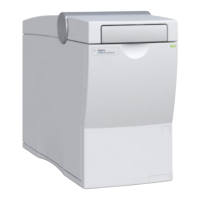

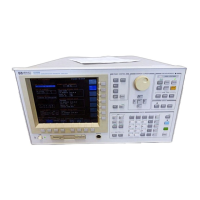
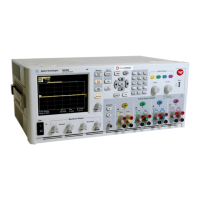
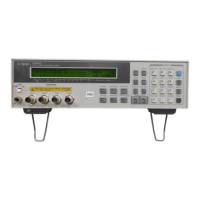
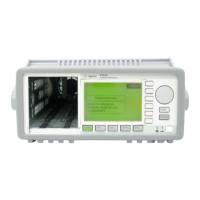
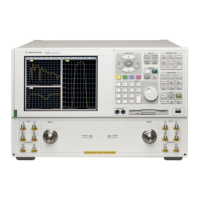

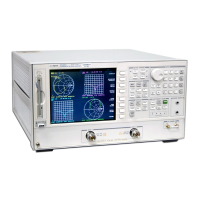
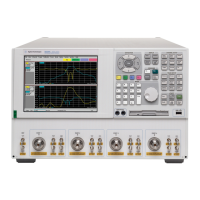
